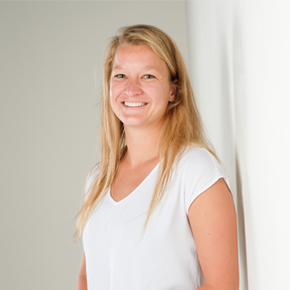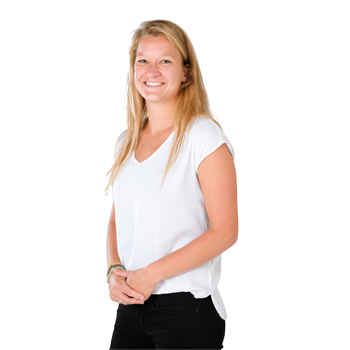When purchasing a product or choosing a restaurant, we often first look at the experiences of others. Reviews are not only valuable for consumers but also provide crucial insights for producers. What if you could use reviews to improve your product, optimize the customer experience, and increase customer satisfaction?
For Erik van Dijk, Head of the Product Research Center Male Grooming at Philips, this is part of his daily work. His mission: to develop products that seamlessly meet customer needs. An essential tool in this process? Reviews & Ratings.
To systematically analyze and leverage this valuable customer feedback, Philips enlisted the expertise of CQM. How did we approach this? Read on to discover how review data directly contributes to better products and stronger customer relationships.

Erik van Dijk is head of Male Grooming Product Research Centre at Philips. With his team he is responsible for the male grooming business (male electronic shaving and trimming products). They do everything they can to understand and promote the wishes of consumers around the world. As well as 400 consumers and product tests a year, they also analyse customer reviews... We talked about this work with Erik and Wieke Selten, CQM’s consultant on this project.
Tell us Erik, why are these reviews so important to Philips?
“People write reviews. Of products, services, their experiences, about almost everything. When they’re satisfied and when they’re not. I think every company should do something with this information: reviews, good or bad, are invaluable. There are of course also reviews about Philips products, for example our shavers. A review often comes with an overall score, based on stars. At Philips, we think our products must have a minimum score before you can call them a success. The more stars it scores, the better our product, and the better we’re meeting our customer's needs. If there’s room for improvement to one of our products, we definitely want to know that, so those reviews are crucial," says Erik.
He continues: “Textual reviews contain a wealth of information. And there are all kinds of automated methods available to access that information, and in some cases they do the job. But for our products we need more detail and more complex models to analyse the data, which is why we enlisted the help of CQM. These smart guys developed the Reviews & Ratings (R&R) approach, which shows in numbers exactly what consumers find important about a product.”
The impact of one element from a review
“It’s important to map out the value of a particular element,” explains Wieke. “A damaged box, for example, because the delivery person hasn’t handled your package carefully says nothing about your product, but can result in a bad review score. And just how important is product delivery to the customer's experience? These are questions that can be answered using the R&R approach. Philips attaches great importance to the consumer’s evaluation in all areas, including delivery. So in this case it’s valuable to have clarity about why a review scores worse, and whether that’s due to the product or the delivery.”
So how does analysing such a review work in practice?
Wieke continues: “CQM's R&R approach is far-reaching. For example, we’ve developed an annotation tool that lets you attach values to words, so that text can be seen in numbers and thus measured. Reviews are still read manually as well, because of the quality of the data that provides. But the tool works a lot faster and it’s easy to scale up. For example, we check the reviews against 10 topics that can be seen at a glance, so we can then specify numerically how positively or negatively the product has been written up. The tool reveals exactly what’s valuable in the review. After which, the analysis process within the R&R approach can begin. Having now literally translated text into numbers, we need to make the link between those numbers and the star rating in order to draw conclusions about what a consumer actually finds important about a product.”
Extra step: Meta-analysis for a broader approach to reviewing
“In the end,” says Erik, “we together decided to take an additional step, in the form of a worldwide helicopter overview. We’ve always taken a particular product category with this R&R approach, but we operate all over the world. So it’s also interesting for us to see whether someone from Europe has different wishes and requirements than someone from, say, India. Is a really clean shave just as important to Europeans as it is there, for example? And what do people write about similar products of competitors, and what can we learn from those reviews?
CQM has therefore applied a deeper mathematical methodology and looked to see whether, from all the analyses, any meaningful broad conclusions can be drawn.” Erik beams, “A meta-analysis that gives an insight into all the interrelations across the world. That’s really cool and really useful!”
Closer and closer to the consumer

“In our product category,” Erik goes on, "We’re continuously working with a certain conflict of demands: our product must become increasingly relevant and better, but without becoming prohibitively expensive. Suppose a consumer pays €30 for a product. For which elements is it acceptable for them that the product offers a lesser experience than if they spent €100 or €250?"
CQM's R&R approach helps us in our decision-making: which products are we going to develop, what aspects are we going to improve and do we see a pattern emerging that we can address? All kinds of things that we can now see and decide upon easily and quickly that previously involved a huge amount of manual work. You could also, for example, only look at a limited number of countries, whereas now we can scale up, making all the conclusions we draw much more secure. We’re getting closer to both the consumer and their feedback.”
What was it like working with CQM?
“As many know, CQM has its roots in Philips, which makes this collaboration very special,” Erik says. “For really complex challenges we always work with CQM to ensure a result that’s both innovative and the optimal solution for us. They’re very precise in their work and listen to what you really need, which aligns perfectly with the Philips philosophy that puts the needs of our consumers first. Despite working with highly complex analytical models, they make their application accessible. They also ensure we’re self-reliant: they’ve trained our team so we can implement this R&R approach for ourselves.”
The last word is for Wieke: “I’m repeating things, as Erik has already said it, but this was a really fantastic project to work on. It’s where maths and ‘the normal world’ really come together. This isn’t developing something in an ivory tower. It’s genuinely collaborating with the client and seeing immediate results. Reviews & Ratings is something we’ve been working on at CQM for a while now, and more and more is becoming possible with text analytics. It's so cool when words and numbers make a difference!”
Editorial note: Wieke Selten, the consultant involved in this project, is no longer employed at CQM. We have kept this case unchanged, as the insights and experiences she shares remain representative of our methodology and approach.
Like to know more about the possibilities offered by reviews and analysing texts?
Please contact Peter Stehouwer, who will be keen to tell you all about your options regarding your specific organization or challenge.
If you want to stay up-to-date with the latest news from CQM, follow us on LinkedIn or subscribe to our (Dutch) digital newsletter.
Publication and/or duplication of texts/images is only permitted following explicit permission from CQM.
Photo credit: Philips.


